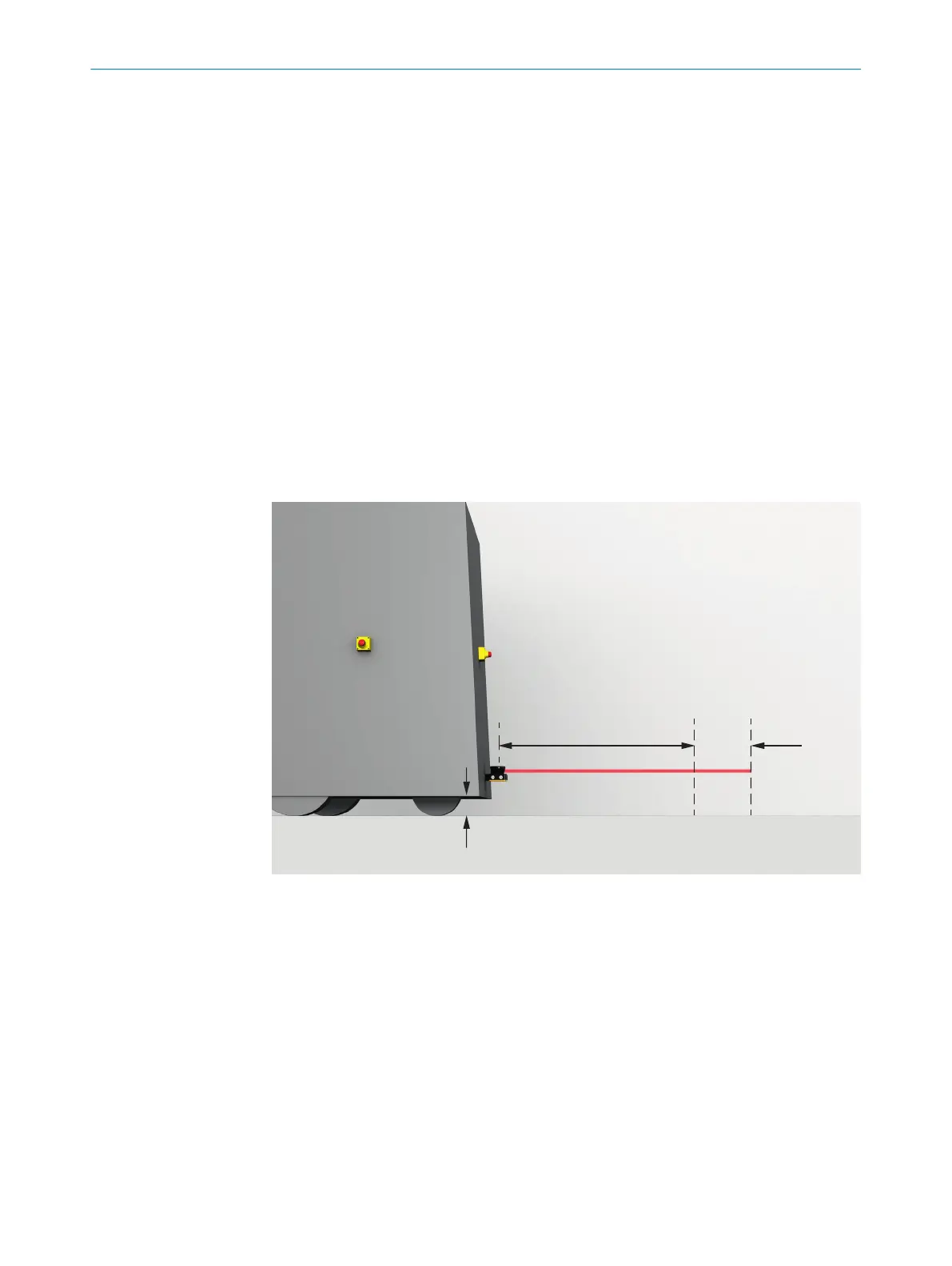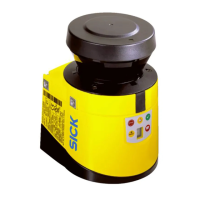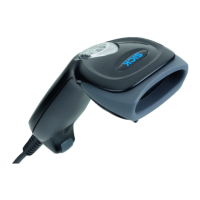4.3.10.1 Protective field
The protective field must be designed in such a way that it recognizes a person at
t
he latest when he or she is at the minimum distance from the hazardous point. The
minimum distance allows the vehicle to stop in time before it reaches a person or an
object.
In mobile hazardous area protection, the minimum distance typically defines the pro‐
tective field length required. When calculating the protective field length, the impact of
turning must be considered separately.
The protective field must be wide enough to cover the width of the loaded vehicle with
supplements for measurement error and the lack of ground clearance. When calculat‐
ing the protective field width, the impact of turning must be considered separately.
If you define a number of monitoring cases with different protective fields, you must
calculate the protective field size separately for each protective field used.
4.3.10.2 Supplement Z
F
f
or lack of ground clearance
This supplement is necessary, because, generally, a person is detected above the foot
and t
he braking process cannot take account of the length of the foot in front of the
point of detection. A person’s foot could be injured if a vehicle has no ground clearance.
Figure 22: Flat-rate supplement for lack of ground clearance
B
F
Ground clearance
S
L
Protective field length without a supplement for lack of ground clearance
Z
F
Supplement for lack of ground clearance
The lump supplement for ground clearance under 120mm is 150mm. This supple‐
ment ma
y be reduced further in individual cases, see figure 23, page 36.
PROJECT PLANNING 4
8027909/2023-02-22 | SICK O P E R A T I N G I N S T R U C T I O N S | nanoScan3 – EtherNet/IP™
35
Subject to change without notice

